How to Teach a Dog to Sit in 10 Simple Steps

Updated on
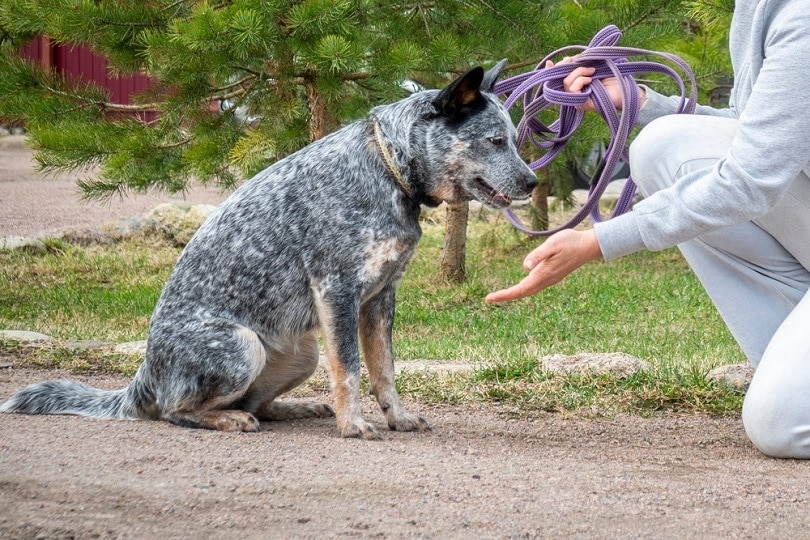
Before You Start
Training a dog can seem like a daunting task. But in reality, it can be fairly simple. It will require patience, preparation, and repetition but can be incredibly rewarding once your pup has learned to sit. When you are ready to start working with your dog, there are some helpful tips you should consider before you start the training process.
Tips for Training Dogs
1. Choose the Right Setting
The surrounding environment is a key component of dog training. A peaceful setting with plenty of open space is ideal and will help your dog feel comfortable. If the environment is loud, cramped, or busy, your dog may become stressed and unable to pay attention to training.
2. Minimize Distractions
Try to stay away from things you know will steal your dog’s attention, such as moving vehicles or other dogs. If your dog is distracted, training will be much more difficult.

3. Have Treats Prepared
Positive reinforcement goes a long way to encourage desired behaviors because it rewards your dog for success rather than punishing them for failure. Treats are an excellent tool to help shape your pet’s behavior.
4. Plan To Train for a Specific Amount of Time
Your dog won’t have the attention span or energy to practice for hours and hours, but an allotment of 15 to 20 minutes per day is a good schedule. Brief yet consistent training sessions yield the best results.
How to Teach a Dog to Sit in 10 Simple Steps
1. Demonstrate your command.
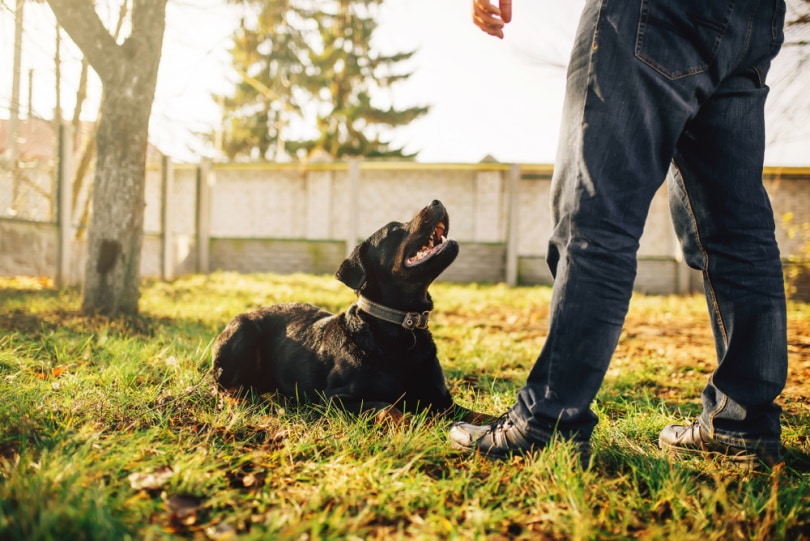
Say the word “sit,” then gently push your dog’s bottom to the ground. When the dog sits, provide a treat. Repeat this a few times if needed. The motion of nudging your dog to sit will teach them what action is required before they can get a treat.
If they struggle with this, try simulating the command with another human. When your dog sees the command being given, carried out, and rewarded, it can help them to catch on.
2. Keep your dog on a leash.
Keeping your dog leashed can prevent it from becoming distracted from the training and running off. The leash can also be used to guide your dog through the motions of the command.
When you tell your dog to sit, carefully lower the leash to the ground and keep it there. Be sure not to yank or otherwise hurt your dog. Moving the leash to the ground can help physically direct your dog into a sitting position.
3. Hold the treat above your dog’s head.

Show your canine that you have a treat. This will get them excited and help keep their attention on the task at hand. If you hold the treat just over your dog’s nose, the position may encourage them to sit on their own so they can look at the treat.
4. Tell them to sit.
If they haven’t already, give them a simple, one-word verbal command: “sit.” Anything more complicated is likely to confuse your pup and keep you from progressing.
If your dog begins to sit without the command, still say it. Your dog needs to learn to associate the verbal command with the action.
5. Show excitement about their success.
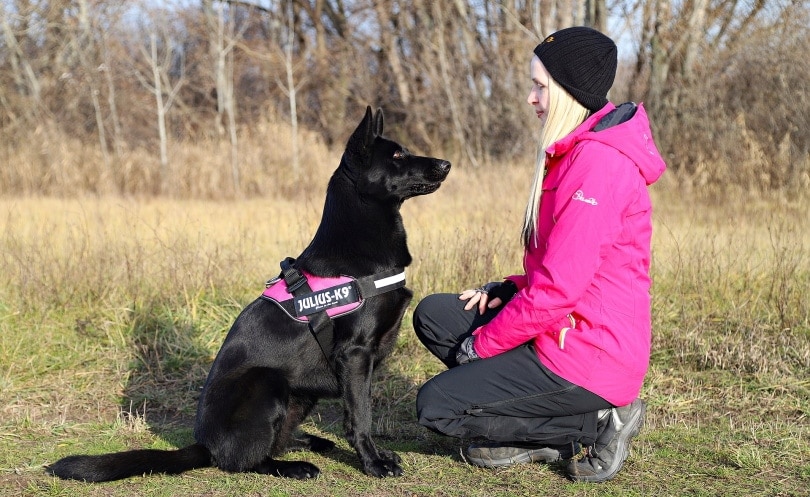
When your dog completes the command, celebrate! Display your happiness to your pet, and your excitement will go a long way to encouraging your dog to keep obeying your commands to sit.
6. Reward your dog.
Don’t forget the treat! The positive reinforcement from giving a treat will be the greatest tool for teaching your pup, so don’t squander it!
7. Repeat.
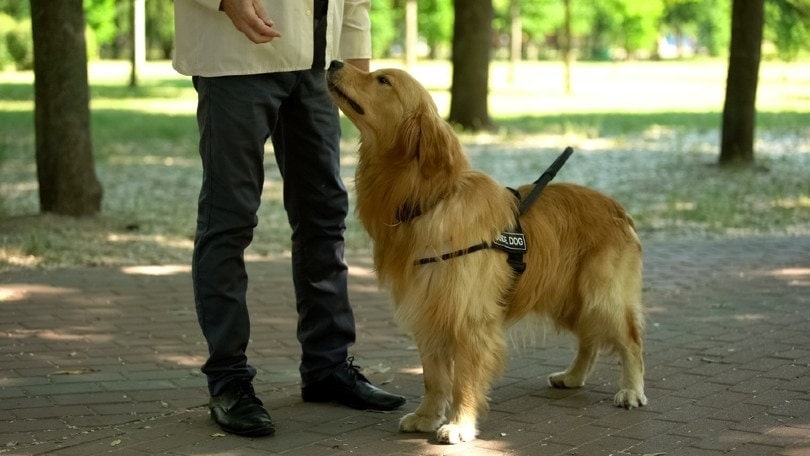
Repetition is vital when it comes to training dogs. As soon as your dog has settled down from the excitement of its success, regain its attention and go through the entire process again. It is recommended that you repeat the process around 10 times in each training session so that it can cement into your dog’s mind.
8. Slowly decrease excitement.
Over time, as your dog better learns to associate the command with sitting, gradually decrease the energy in your displays of excitement. Still applaud your dog and give a treat for their success, of course, but subdue your response somewhat. This will help your pup understand that you are giving them a command rather than a suggestion.
9. Increase the difficulty.
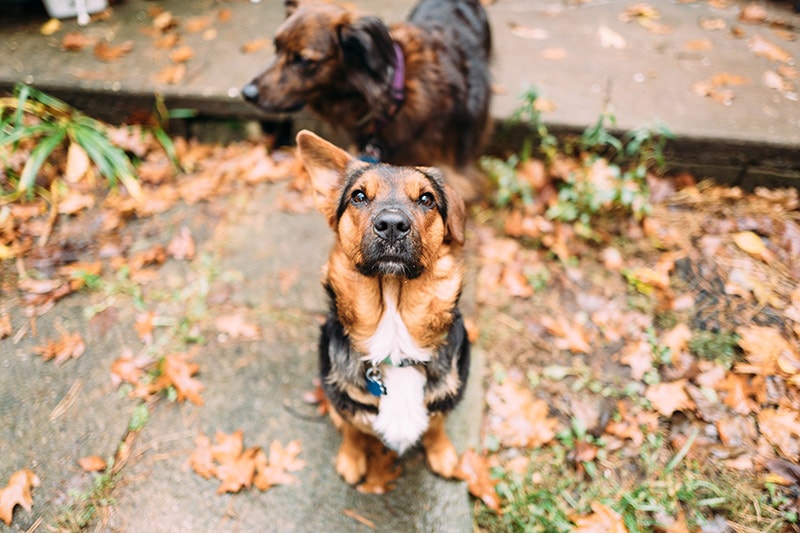
Once your dog becomes increasingly accustomed to following your order, it is time to up the challenge.
For instance, you can remove the leash so that your dog can keep still with no assistance. Another way to add a bit of difficulty is to train them in a slightly more chaotic location to see how focused they will be on your commands.
10. End each session on a good note.
Always be sure to end the session in a way that will make your dog happy, so they are eager to continue training. You can do this by having them perform a command they already know well or scratching their favorite spots.
Conclusion
As you progress in your training journey with your favorite pup, keep these steps in mind to help guide you along the way. Through the process, try to be consistent with your words and actions as well as your praises and rewards. You are your dog’s trusted teacher, so make the learning experience fun and positive for both of you!
Featured Image Credit: Lara Sh, Shutterstock












